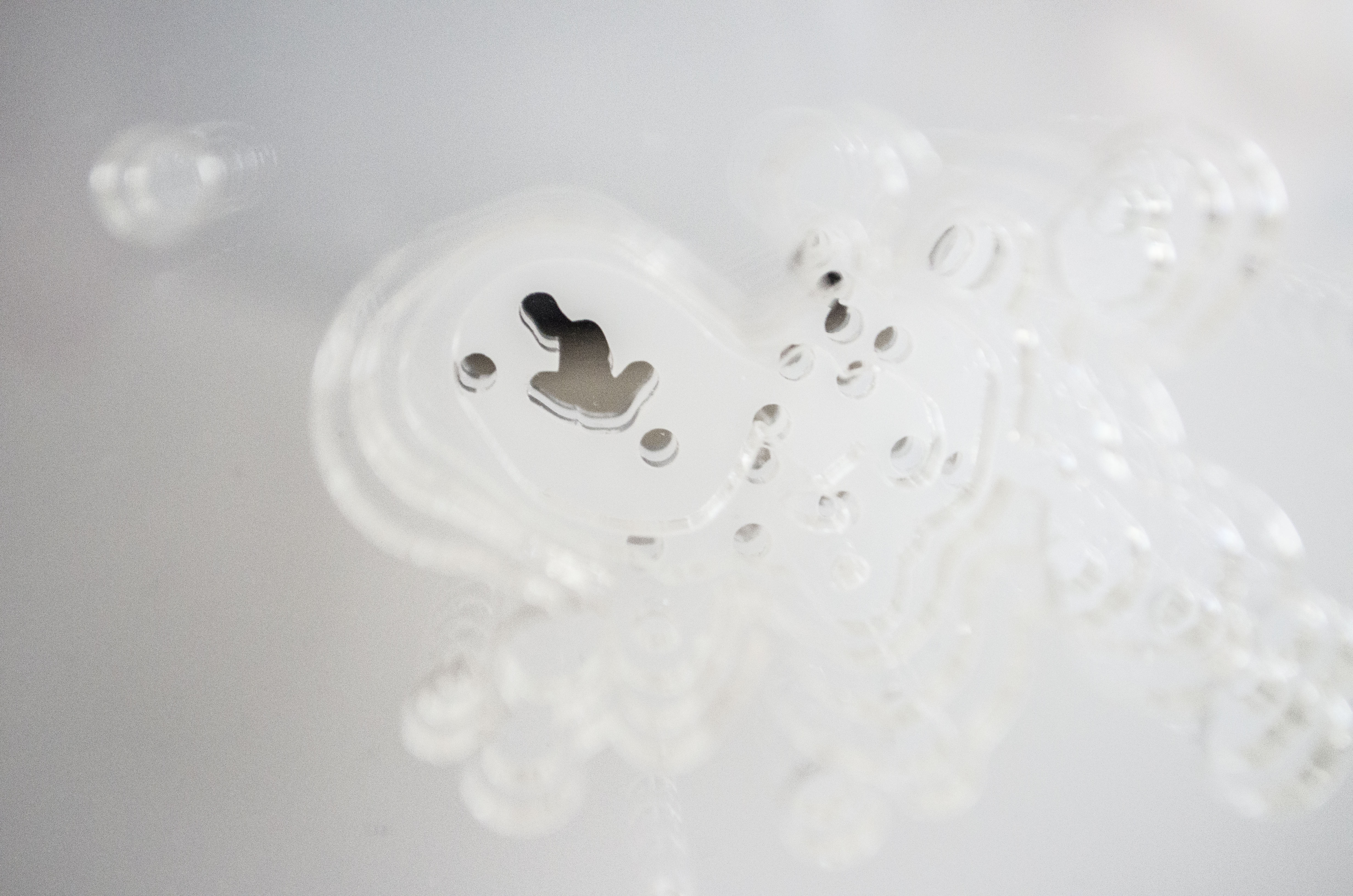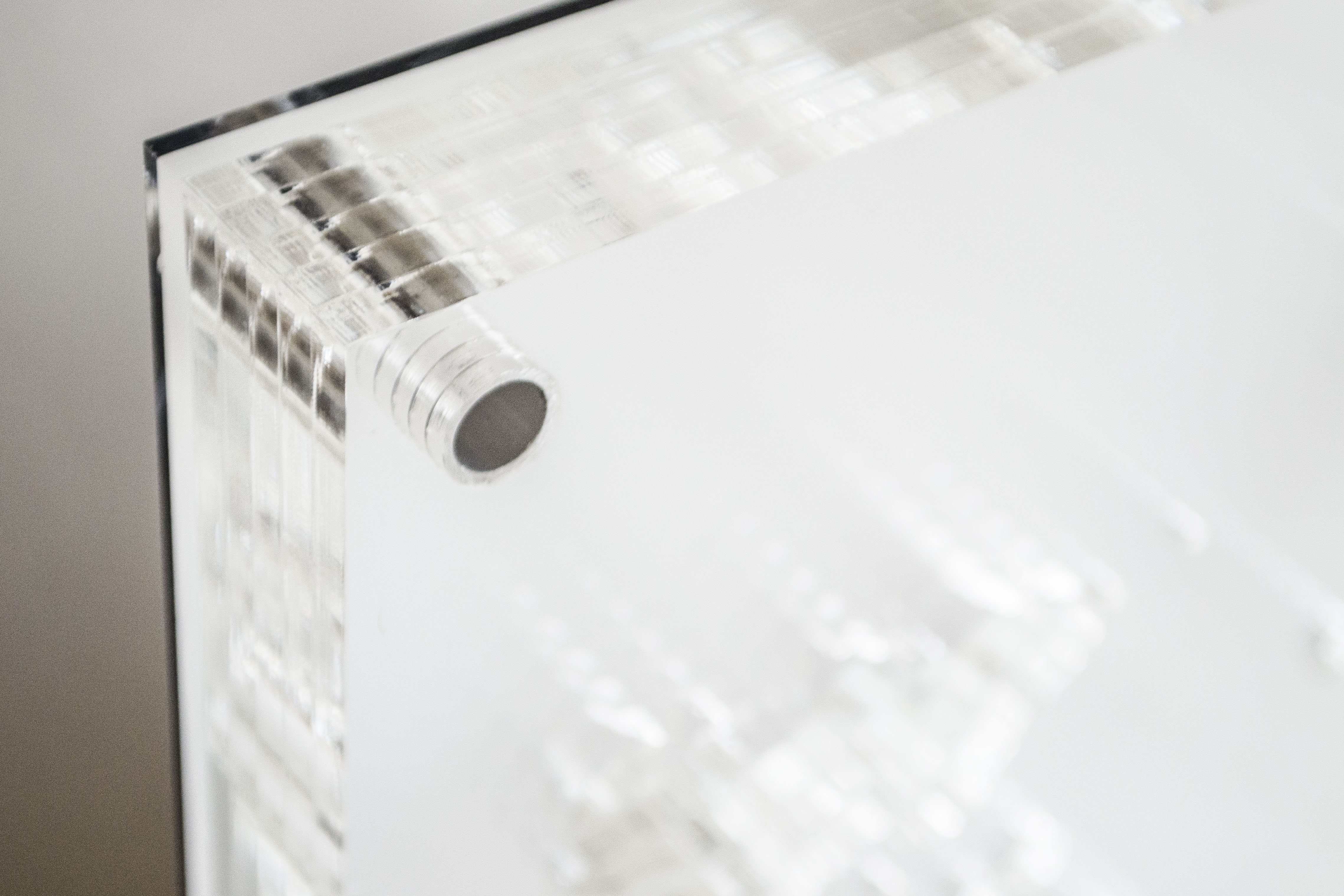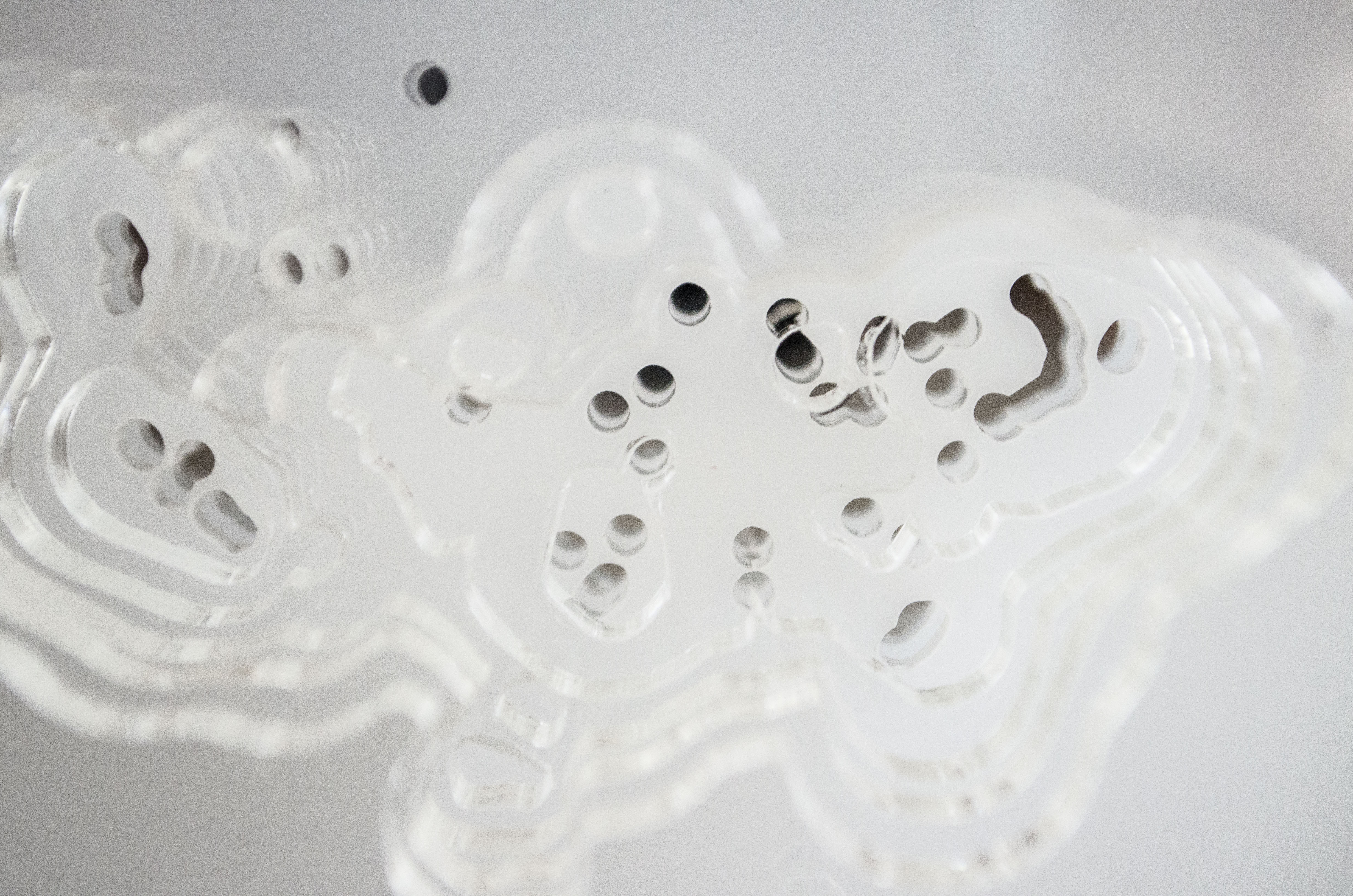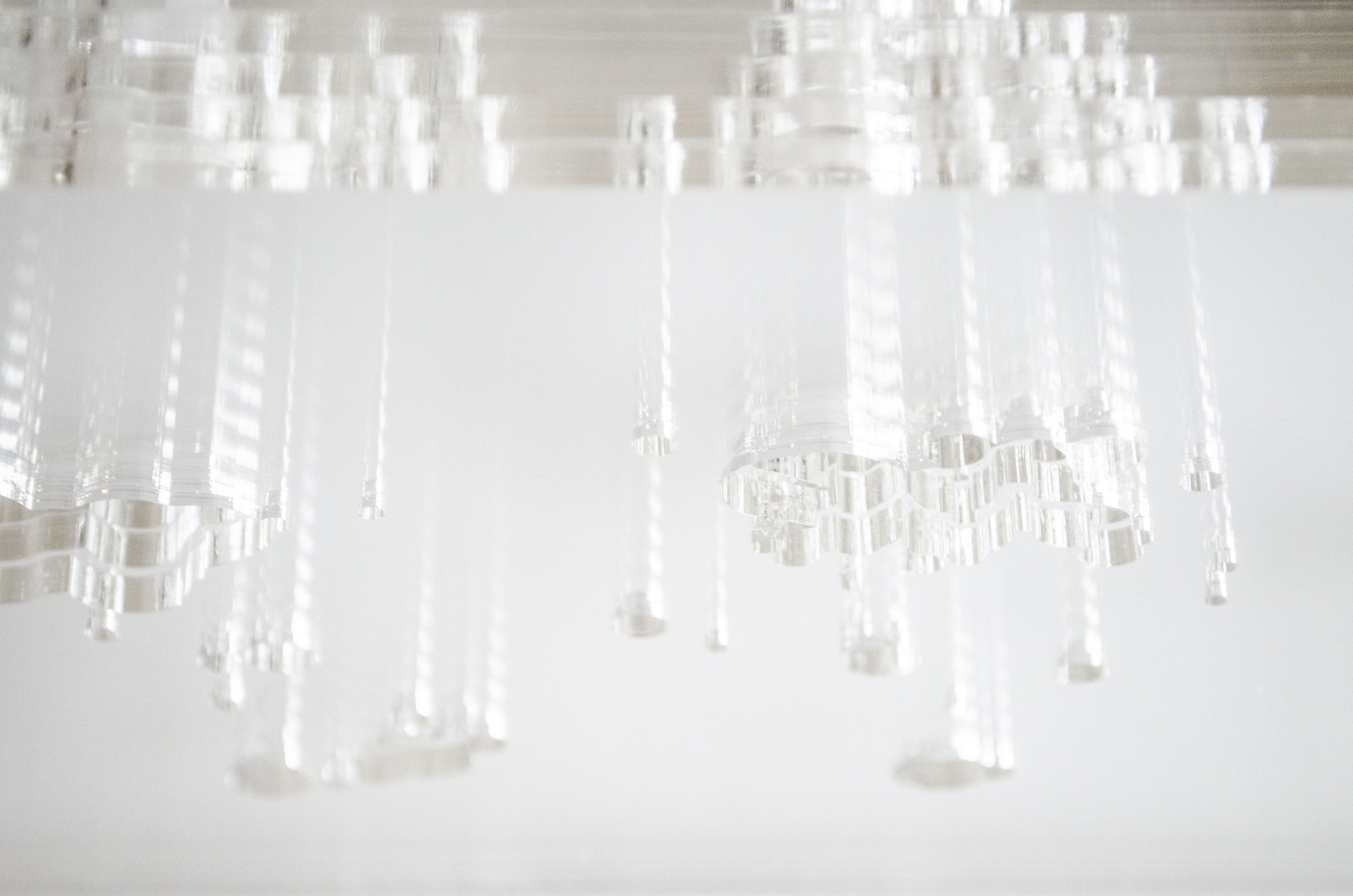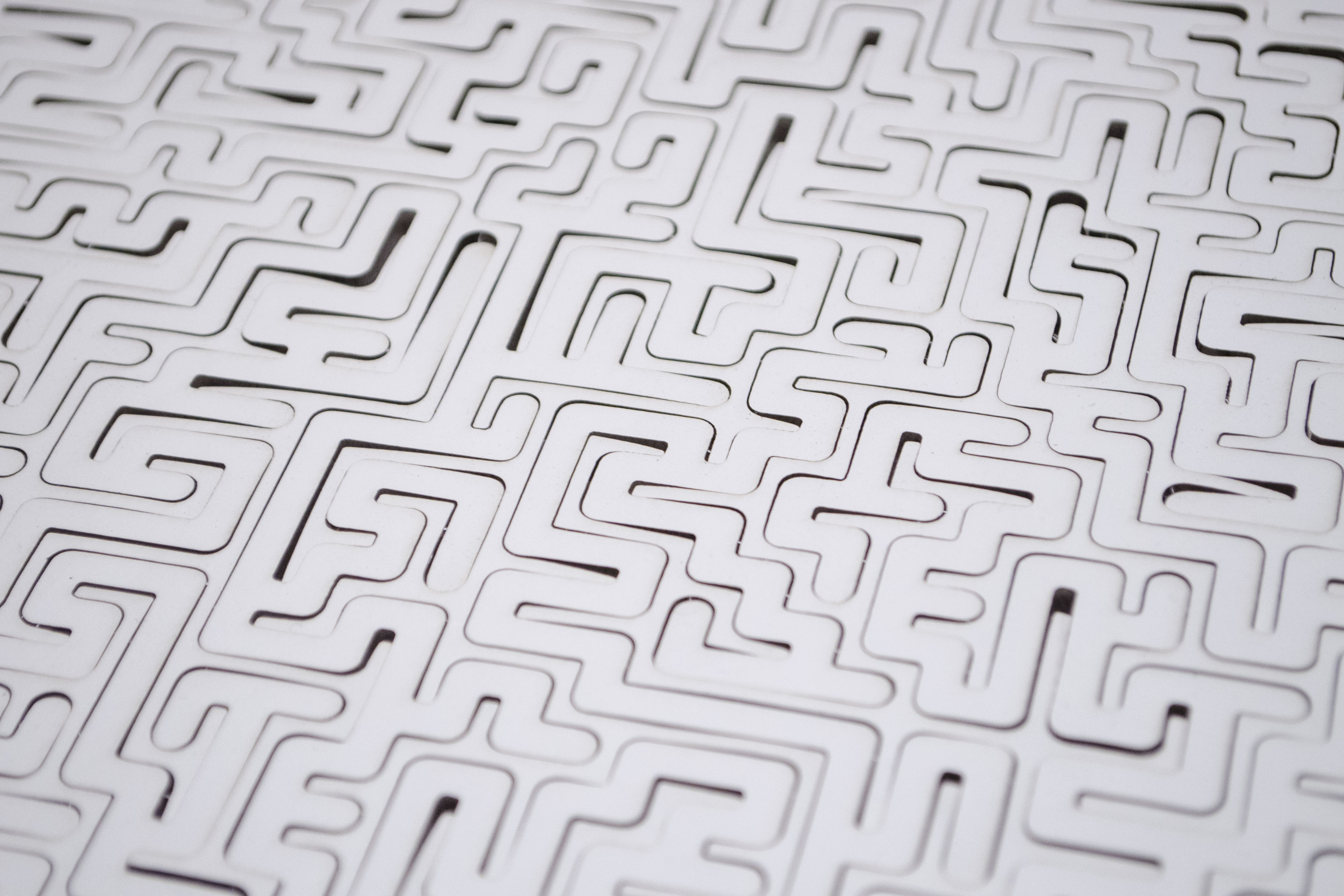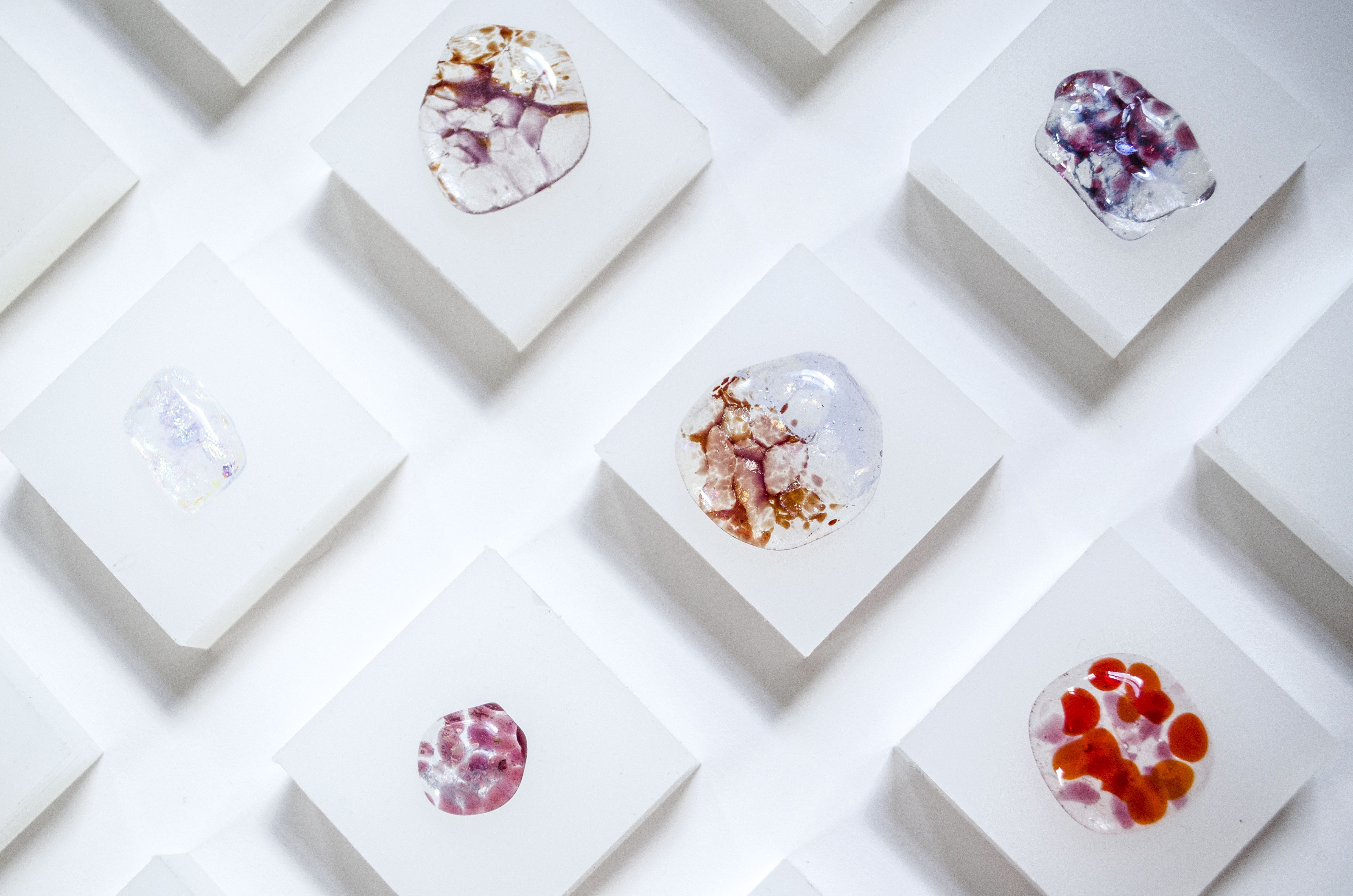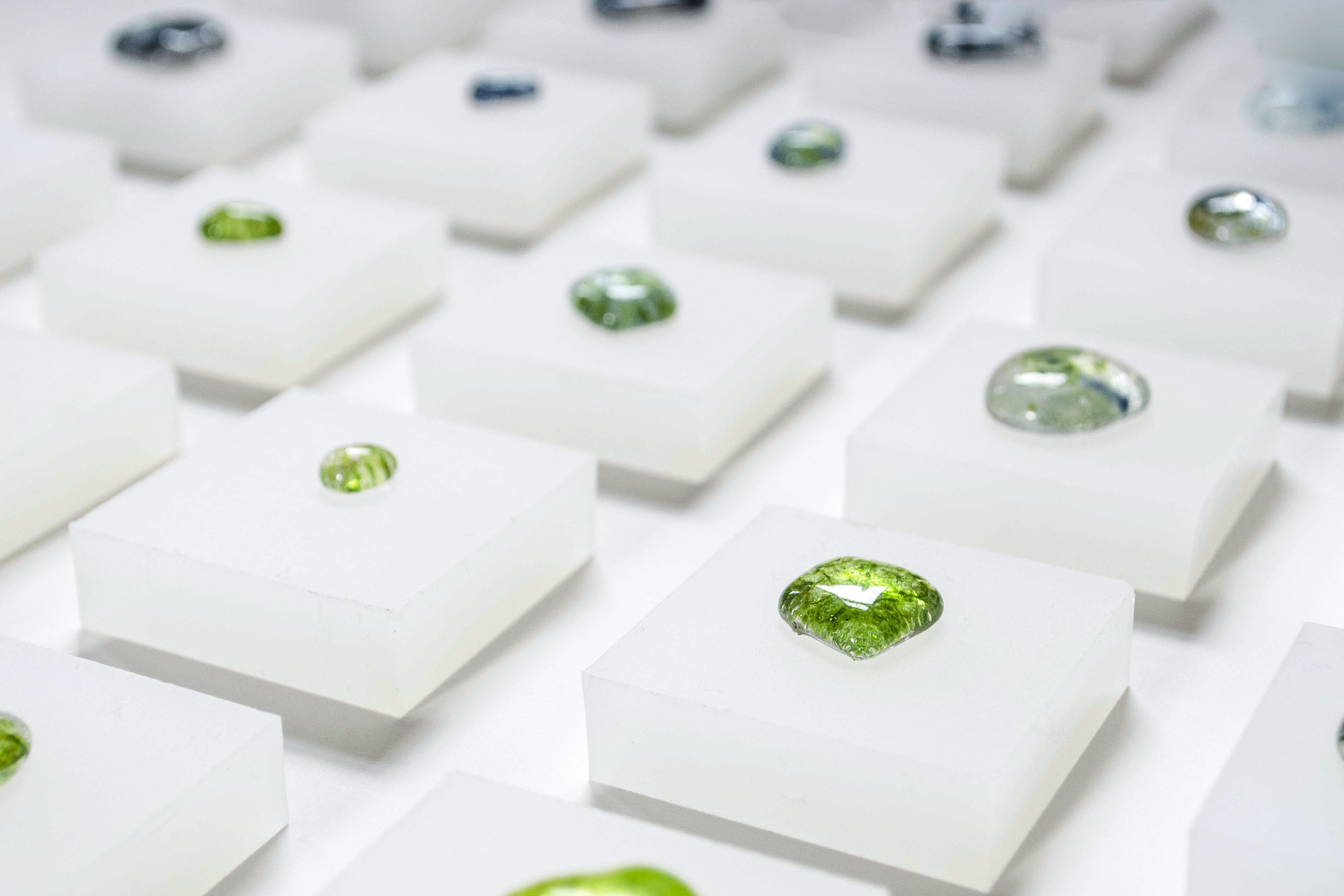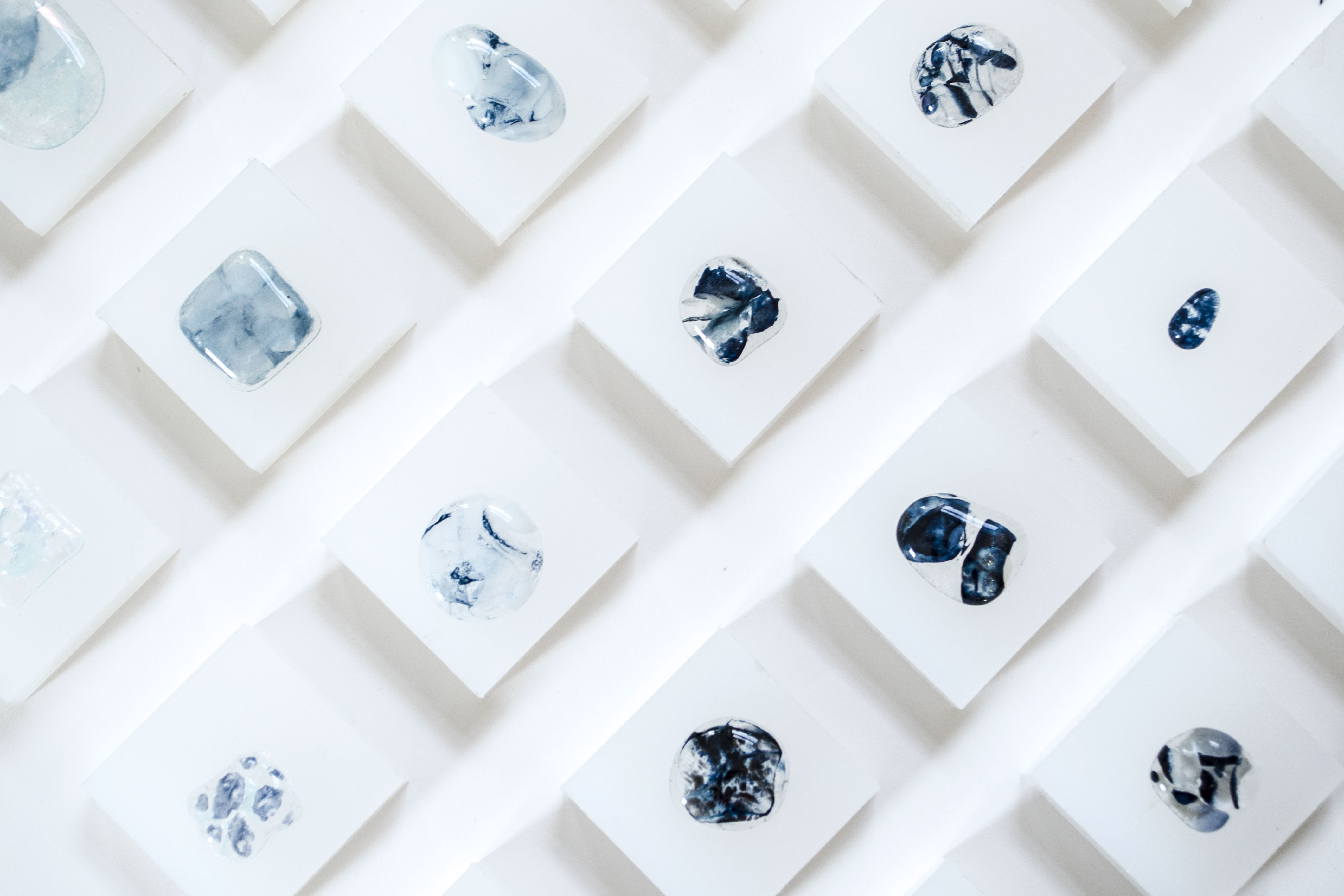See the Pen #14 Styling by Charlotte Dann (@pouretrebelle) on CodePen.
Study 1 – Astronomical – A5
I began my astronomical study by thinking about objects in orbit and how they can change trajectory due to nearby bodies of mass. I knew I wanted to make an impossible cycle of orbiting bodies and decided to use a tetrahedral structure to accomplish this, with the bodies swapping paths at every conjunction. Using a series of illuminated ‘moons’ the orbit creates a rhythmic pattern on three distinct paths (as later demonstrated in my physical artefact). I think the greatest triumph of this project is the rolling close-up camera perspective which beautifully captures the moons as they transition between orbital paths and eclipse one another.
For the physical artefact I wanted to emphasise perspective and path. I bound copper wire rings with gradially dyed cotton; the intensive, purposeful making process results in a multitude of tiny inconsistencies – the microscopic intricacy of the piece is evocative of the complexity of vast scales. I made one regular tetrahedral construct and another with orbits of varied size to reflect the skewed perspective of the virtual artefact. By drawing just one path around each piece it is clear that is passes through each of the tetrahedron’s rings for one arc, and by observing the pieces from different angles the path appears to cast a complex 2D curve despite having very simple 3D rules.
References, Technologies, Materials
Virtual artefact made in Three.js with OrbitalControls. Build files generated from this Codepen demo, process documented in this Codepen collection.
Physical artefact made with copper wire, cotton, and nickel.
See the Pen The World Flickering by Charlotte Dann (@pouretrebelle) on CodePen.
Study 2 – Planetary – A4
I started my planetary study with the view of visualising data. Unsuprisingly, I think the most interesting global network of data is the internet, specifically our communications with one another over it. I leveraged the Twitter and Google Places API to plot all my twiter followers and everybody I follow on Twitter on a map of the world, emphasising for social reach. In light of the contemporary ‘echo chamber’ media narrative I thought it would be interesting to look at the geographical difference (or lack thereof) between the media we consume and the people who consume our media. Ideally I’d like one to be able to type in any twitter user and see their global following/follower network but due to the plotting mechanism (every following/er with a location in their bio has to run through the gplaces api for a lat/lang) it takes a while to scrape the data; I’m sure this can be optimised in the future.
I wanted my physical artefact to display the density of follower areas, and relay some information about the relationship between followers and followings. I chose to use layered acrylic that is cut by thresholding a still shot of the data (from this pen). Since the social reach of the people I follow is not relevant to my network, I chose to display this as a flat layer at the back, revealing spots of mirror behind it. I think the object has a great presence, but the physicality of the layered plastic almost overwhelms the piece and distracts from its priority of visualising data.
References, Technologies, Materials
Build files generated from this Codepen demo.
Physical artefact made with lasercut acrylic (5mm clear, 3mm frosted, 3mm mirrored) and aluminium tubing.
See the Pen Mazes by Charlotte Dann (@pouretrebelle) on CodePen.
Study 3 – Environmental – A3
The inspiration for this project came from Cape Coral in Fort Myers, Florida, a neighbourhood where almost every house borders water due to a labyrinthine network of canals. The utopian grid-like environment represents a perfect symbiosis of nature and the built world. After reading a book on maze generation I decided to make my own generative waterway networks. I decided to vary the colours along the paths to show that while two areas may have close birds-eye proximity, it may take a while to canoe between the two.
I knew I wanted to have a very obvious corellation between my virtual and physical artefacts so chose laser cutting to recreate the mazes directly. I used different coloured paper to show the spread of water from the central source point; layered between acetate it gives the piece depth and tangibility. Because of the rambling nature of the mazes the laser cut pieces were very hard to align, but I think the slight misalignment compliments the layering and adds to the perception of depth. As well as the paper and acetate piece I cut a full maze into foamboard, intending to remove the inners and add water to try and recreate the motion of travel; the power of the laser melted too much of the inside foam for that to be viable, but the cut piece alone with its dips and raises casts intricate shadows and results in a tactile object of beauty.
References, Technologies, Materials
Algorithms and inspiration from Mazes for Programmers by Jamis Buck.
Build files generated from this Codepen demo.
Physical artefact made with lasercut paper, foamboard, and acetate.
Study 4 – Human – A2
The concept for this study began when I was making props for a music video where we had a 2800fps camera shooting scenes of absolute destruction - pouring blood over and setting fire to props that took me days to make. The footage was absolutely compelling, and spoke of the irreversible nature of cause and effect, parodied by Barbies. I triangulated (using a Delauney algorithm) randomly-placed points across the video and masked them out to play back with different delays. Although simple I think it was a really effective translation from the raw material, emphasising the temporality and transience of the perfect Barbie scene.
The physical artefact came from my handling of a mold-making material called Composimold. I initially set out to 3D print models out of several materials, melting/removing/manipulating parts of them to show fracturing akin to my virtual artefact. Being unable to source a 3D model I was happy with, I decided to cast a real Barbie myself and make reproductions out of a material I could manipulate - wax. My reusable mold-making material liquifies when heated though, so I found that the very action of making a copy out of hot wax reshaped the mold. This was a fascinating discovery and thus my artefact became the iterative destruction of the mold as it was used.
References, Technologies, Materials
Footage from the music video for Intertwined by dodie, with permission of Director Sammy Paul and Art Director Guy Larsen.
Physical artefacts made from wax, resin, using Composimold.
Study 5 – Microscopic – A1
In this study the physical and virtual artefacts developed alongside one another. I began with thoughts of cell division, and the intricacies and detail of the human body on a microscopic scale. I wanted to experiment with shaders and GLSL, aiming for a metaball effect to simulate mitosis. I created a shader with a genetic code that could be tweaked to show mutation. It was at this point I began thinking that glass would be a good medium for the physical object as my shader resembled some of my previous experiments with glass and I was drawn to its aesthetics.
As I compared some of my existing glass samples I saw common features in them, and arranged them as a grid where each piece was related to those around it. At this point I stopped seeing the shader as a means to a family tree of genetically-modified results, but likewise as a grid of related materials. In the final iteration of the virtual artefact random setting are selected, and each gem is derived from the gems above and to the left of it, with genetic mutations also preavilant through the grid. I also crafted a new set of glass pieces that transcend colour, size, inclusions, and other parameters visible in the program.
References, Technologies, Materials
GLSLCanvas library by Patricio Gonzalez Vivo, WebGL noise library by Ashima Arts and Stefan Gustavson.
Build files generated from this Codepen project.
Physical artefacts made from Bullseye glass.




































































